Decorative mills for the garden
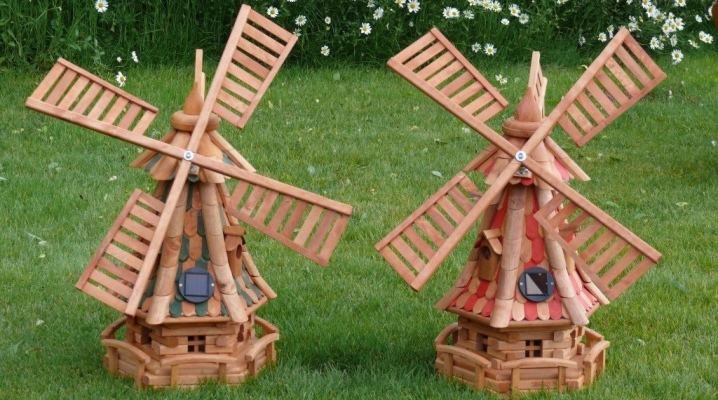
Only garden beds and a lawn, at best a bench or a modest gazebo - such dachas are a thing of the past. Today, at their summer cottage, the owners are trying to realize their creative ambitions, to create a cozy place, beautiful, comfortable, every corner of which is thought out. And although you want individuality, some of the cottage attributes have already become a trend, and you don't need to give up such an idea if you really like it. For example, decorative mills for a blooming garden are a great option for decorating any territory.
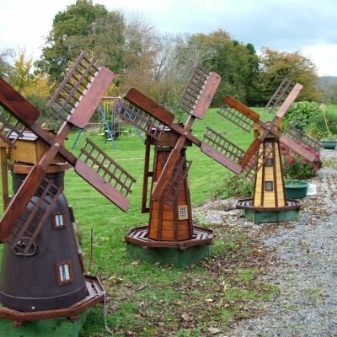
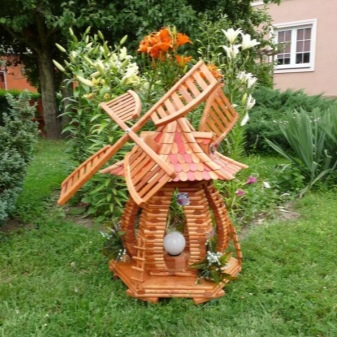
Peculiarities
The era when the mill was considered a working giant is over. Today their functions have become unnecessary as electrification has made the process of grinding grain more efficient and faster. But the design of the mill itself evokes understandable nostalgic feelings: small mills look charming against the background of a suitable landscape, for example, in a garden at a dacha.
The size of the mill can be matched to the site. This is just a miniature copy of a real mill, but also made of wood, repeating all the design features of the original.

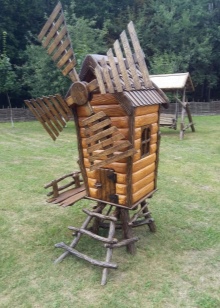

Stylistically, the mill is very suitable for the garden; it is quite capable of becoming its main decoration. It harmonizes the space, evokes pleasant associations among the owners of the dacha and their guests. It makes the garden more lyrical, if this word is appropriate, gives it a rustic charm, coziness, which is especially valuable for a city dweller.
It cannot be said that this will only be a decorative structure. Sometimes the mill becomes something like a garden chest: inside it you can store some kind of summer cottage accessories. You can also use the mill as an object to mask the unevenness of the territory. Finally, with the help of construction, you can designate some important sector of the garden.

What are they?
The mill is made of wood (the most common version) and stone. Structurally, it can be water or wind.
A standard windmill has a trapezoidal shape: blades with a rotation function are attached to one wall - so the structure will be as reliable as possible. The water mill organically "poses" near a small reservoir, even a decorative pond. A small cascade or waterfall very often crowns such an object. A decorative structure made of stone will be the most durable, but you cannot call it mobile - it will remain where it has been installed.
Be that as it may, a building made of any materials decorates the site. Even a small (up to 1 meter) mill becomes an exquisite dacha decor, what to say about buildings that can be ranked as small sheds, so creatively designed as a mill.
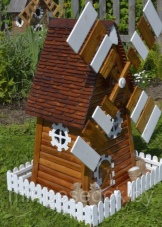
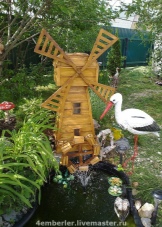
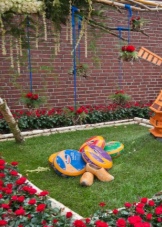
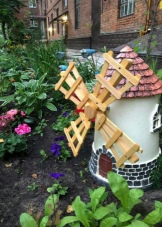
Manufacturing materials
Any construction starts with a project. First comes the idea - what size the structure will be, where it will stand, what materials to make it from. Examples can be found on the Internet, printed, converted to suit your needs. You can even draw a sketch yourself, based on the most attractive options. Then a plan is drawn up, which allows the calculation of materials to be carried out as accurately as possible.
For example, if it is a stone structure, the following materials are likely to be required:
- brick or broken pieces of it that can become the foundation;
- sand and cement;
- natural stone (but facing tiles are definitely suitable);
- sheet metal or wooden slats (as an alternative - lining) for decorating the blades;
- threaded rod;
- mixed-size fasteners.
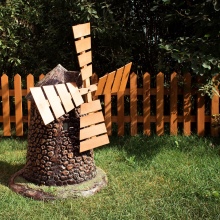
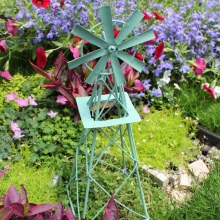
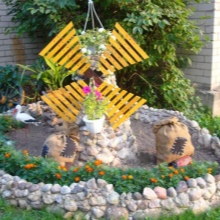
But more often they still build a mill of wood, sometimes replacing wood with plywood. If it is plywood, then you should take a moisture-resistant material, since any other will quickly render the product in the open air unusable. If the mill is supposed to be built massive, more than 1 m in height, it will be necessary to make a concrete foundation.

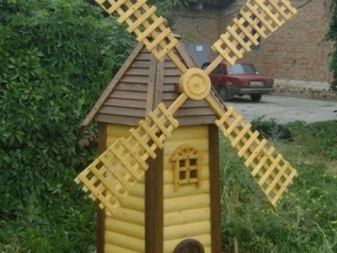


Ready-made mills, which can be bought immediately and delivered on site, are often made from polystone... The same products that are made by hand are made literally from scrap materials, using and lining, and blockhouse, and wire, and any suitable finish (varnish, paint, stain).
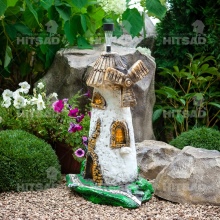

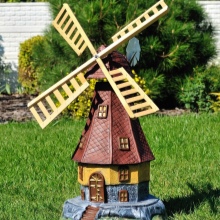
Where to place?
This design can become the center of the entire composition of the site in the country. And if this is exactly a composition, then a wooden well or a decorative haystack can complement it. Many summer residents put wooden figurines of animals next to them, break flower beds in country style. The structure can stand in any sector convenient for this: and in a garden among flowering trees, it will be convincing, and next to the terrace, and surrounded by flower beds. It is important that the selected material for the mill and its design itself fit well into the landscape and style of other garden buildings.
In the recreation area, for example, a mill with a waterfall will look harmonious. It will be especially harmonious near the pond.
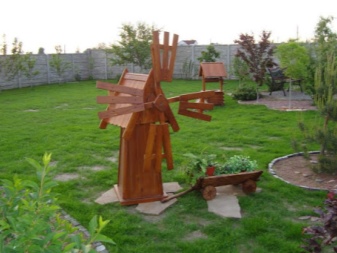

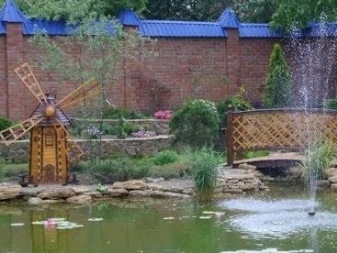
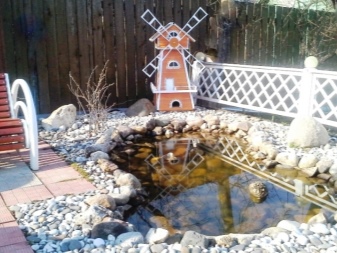
The functional of the structure can be represented as follows:
- cellar / shed for garden tools;
- toilet or outdoor shower;
- dog booth;
- playhouse;
- flower bed in several tiers;
- a gazebo and even a summer kitchenette.
But if the builder does not have such claims, the mill will not become worse because its function is limited only by its decorative purpose.
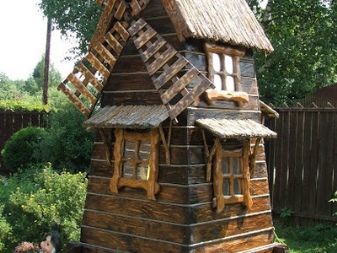

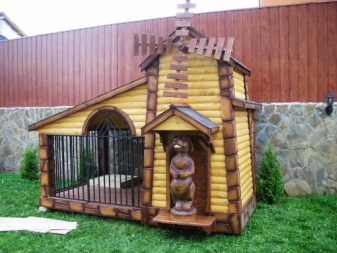

How to do it yourself?
If you are ready to build a mill on the site, you need to do everything according to step-by-step instructions - from project development to decorative design of the structure.
Schemes and drawings
All elements and parameters are prescribed in the exact project.... The more accurate the drawing, the less problems will appear during construction. Many summer residents make the layout themselves. But with the advent of Internet services, modeling the structure in a special program becomes an easier option. Finally, the finished drawing can be downloaded from the Internet yourself or you can ask a third-party specialist to develop it.
To do it by eye, without drawings is not an option. Even if the mill is small, the risk of inaccuracies is high. Everything is spelled out in the drawings and diagrams: from the parameters to the form.
There is still a difference - to make a rectangular or round mill, wooden or stone.
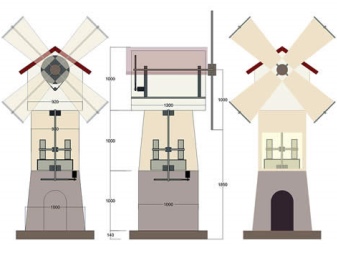
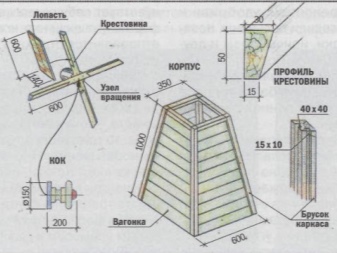
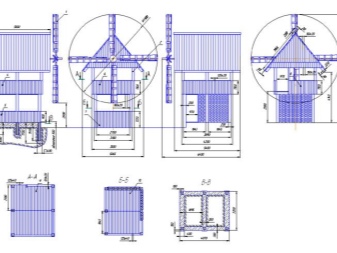
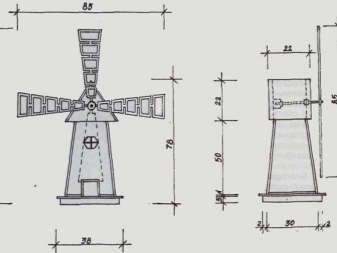
Base bookmark
Let's say it is decided to build a wooden mill. This object does not need a foundation, since it must be mobile a priori, so that if the owner wants to "move" around the site. If it seems that with this approach the mill will not turn out to be stable, the role of the foundation will be taken over by 4 legs from a bar, it needs to be sharpened at the ends. On the one hand, the legs are attached to the lower part of the platform support, on the other, they are stuck into the soil.
If the building is conceived to be solid, that is, there, for example, will house a playhouse for children, the foundation, of course, is needed. Otherwise, the mill will just turn over in one moment. Then a shallow foundation is made, going along the perimeter of potential walls.
The support platform will give the structure stability. This means that it will be necessary to assemble a square of a suitable size from a bar. And to increase rigidity, opposite corners are connected crosswise.If the builder so desires, the area of this support platform can be larger than the base of the mill, which will prevent the wooden product from overturning if, for example, there is a strong wind. And such a platform will also serve as a platform for other decorative needs in the country - you can make a decorative fence.
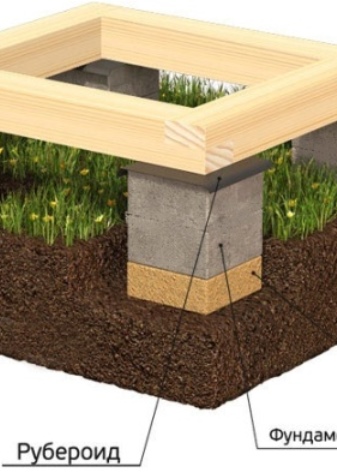
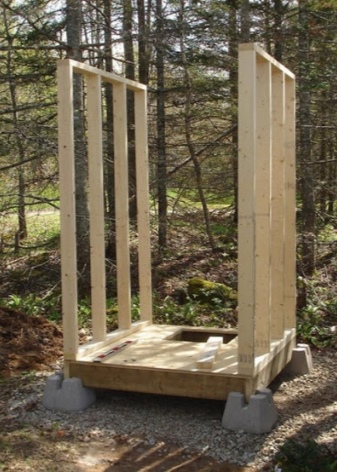
If the mill is made of stone, it definitely needs a foundation, otherwise, the building runs the risk of floating along with the ground in the spring or on rainy days. How deep the filling will be depends on the parameters of the mill. If its height does not exceed one to one and a half meters, you can dig a hole 40x40 cm, 35 cm deep. Reinforcement should be laid inside this hole and filled with a standard cement-sand mortar. The foundation must be allowed to dry, it will take at least 2-3 days. And only after that, construction continues.
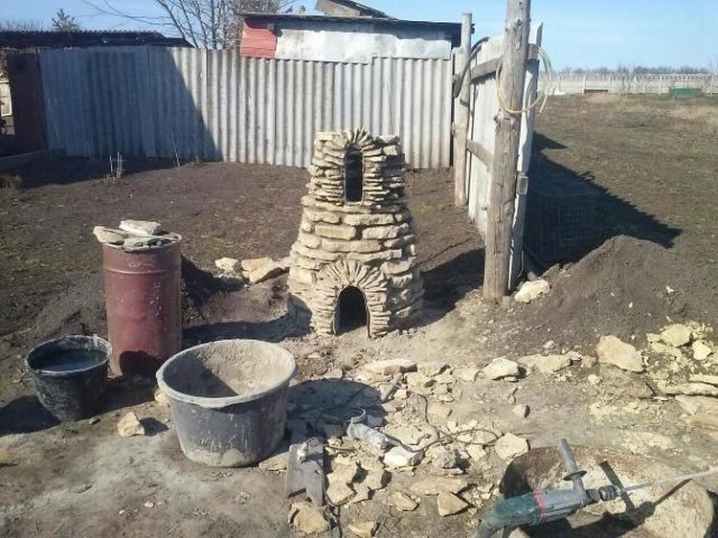
Wireframe creation
The simplest case for a wooden structure will be a trapezoidal box. It is necessary to attach four equal-length bars to the platform support erected before with self-tapping screws. From above, the edges are articulated with a bar horizontally for additional fixation. Assembly requires symmetry, this rule cannot be ignored. The edges of the resulting structure are usually sheathed with wood.
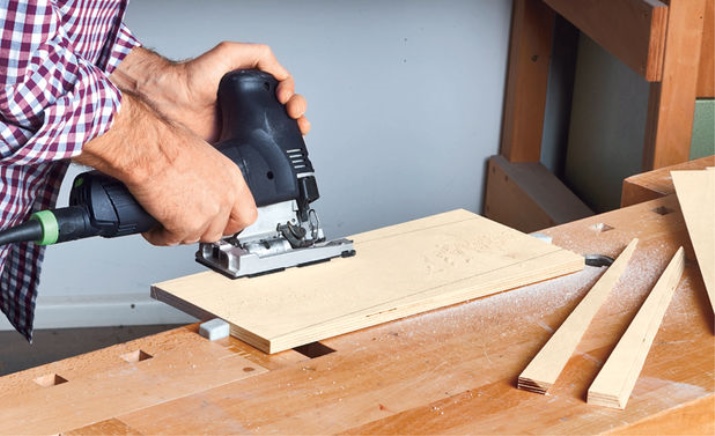
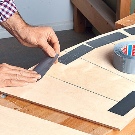

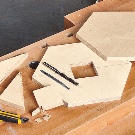

The stone mill is a little more complicated. Usually the finished house is not empty inside, so the foundation is made. It is either brick or brick shards. The owner makes the masonry of the required shape, its size can be any. The mill itself is often made either trapezoidal or conical. The binding element will be the usual cement-sand mortar. To ensure the evenness of the structure being erected, a level of any kind is applied.
When a brick is laid, a threaded rod is hidden at the base of the mill - in the future, it attaches the blades. A plate must be welded onto this stud in advance, or simply screwed on a large nut, it will hook the masonry with it. At the same time, it is imperative to leave other technical holes at the base of the structure: when the solution hardens, it will no longer be able to physically change it. That is, you can drill the masonry, but there is a risk of splitting the entire base.
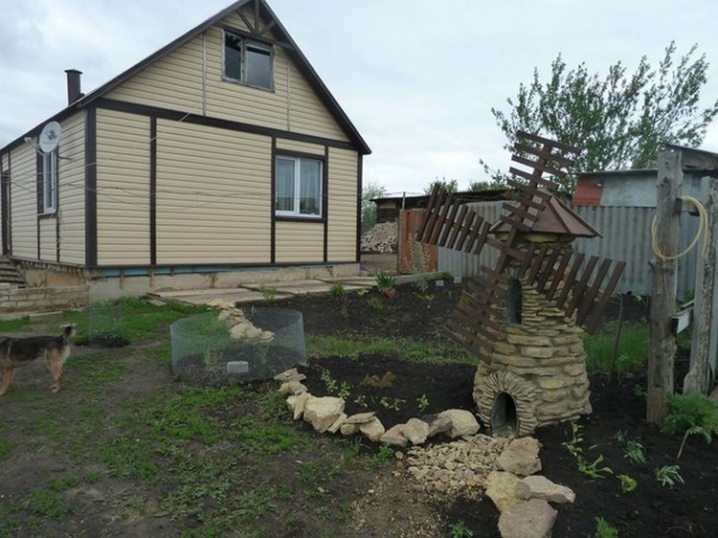
Roof
There are options here: the roof can be gable or, which is a little more complicated, four-pitched. Four slopes are more convenient for massive structures, and if the mill is not higher than one and one and a half meters, a gable roof is enough. This is usually done like this: from a bar you need to put together two ends so that you get a triangle. Previously, large mills were covered with roof tiles. Today, for a decorative mill, a material that was taken under the base, for example, a colored one, can be used. professional sheet or modern roof tiles, but made in a retro style. A plywood slope is first laid under the roof itself.
The joint of the roof ribs will close the ridge: you can use either a finished part or one made by yourself. If you abandon the ridge, the roof will give the impression of an unfinished building. And rain will easily penetrate into the building itself. The finished roof must be put on the mill body and fixed inside with long self-tapping screws.
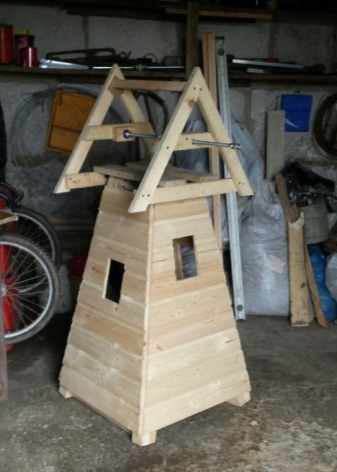
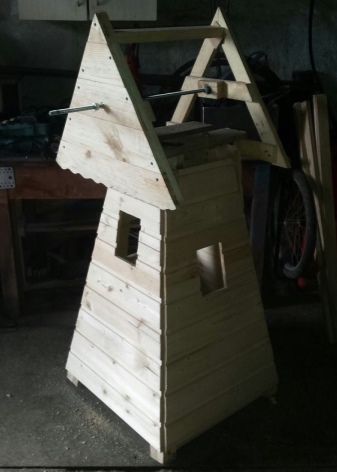
The propeller is a separate chapter in design. These are the blades whirled by the wind, the most recognizable and charming part of the windmill. One of the ways to collect it is as follows:
- cut 2 circles of plywood with a diameter of about 20 cm, make a hole in the center with a drill for a hairpin;
- separately assemble the blades from the rack: so that the wind can twist the propeller and rotate the millstones, in a genuine mill they will be slightly at an angle to facilitate air entrainment - this trick can also be used for a decorative structure;
- parts must be treated with a suitable antiseptic and painted with paint or tinted with stain;
- the blades at an equal interval must be clamped between two plywood circles with glue or bolts;
- the finished propeller must be installed on the stud, tightening the nut on both sides.
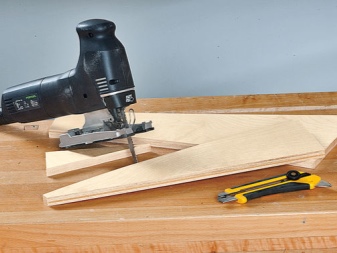
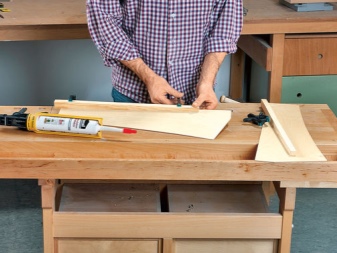
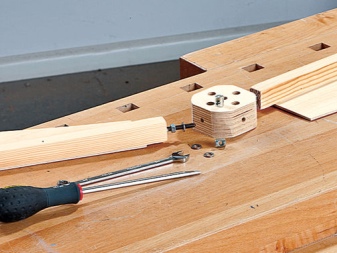
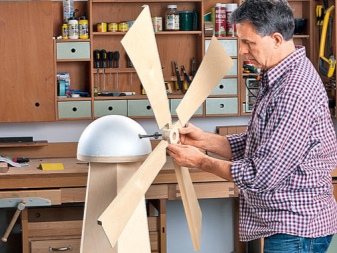
There is another way to build a propeller, namely:
- two long slats cross-on-cross are held together with glue;
- in the center, where they intersect, a hole is made for the hairpin;
- a blade rail is fixed on each edge;
- the assembled propeller is mounted on a hairpin, fastened with nuts;
- if the blades are made of helical metal (which is also quite possible), the sharp edges of the metal are processed, the parts are welded to each other;
- iron must be painted to avoid rust.
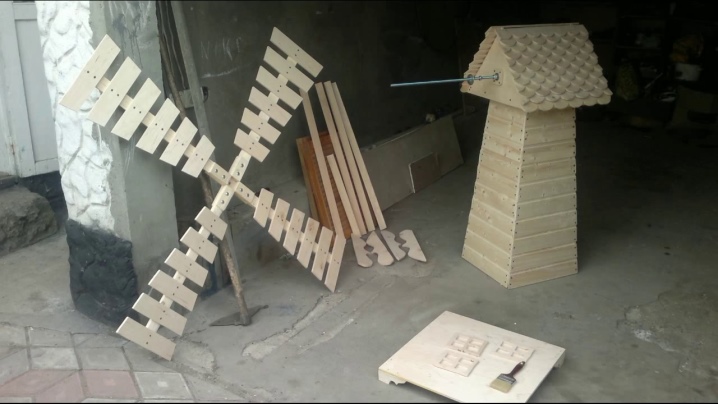
Sheathing
The frame is sheathed very, very carefully: it is important to respect the proportions and sizes. Often in the course of cladding, the builder decides to make a window or doors - and these are exclusively decorative elements. The roof is formed precisely during the cladding process. As a standard, they decide to finish the mill with plywood, but sheathing with boards is also possible. The boards are pre-sanded. A blockhouse is often used for cladding: it perfectly imitates log masonry. And as an aesthetic moment, this idea is very successful.
Even before sheathing, it makes sense to think about styling the structure.
- If it is a Japanese-style structure, stones, vegetation and water will surely be combined there. It's a simple, sleek and minimalist solution. Bright plants next to such a mill will be out of place, but bamboo is in perfect harmony with the design.
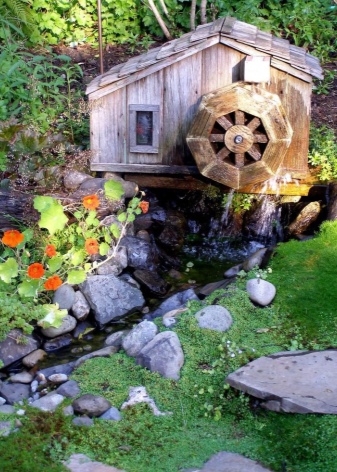
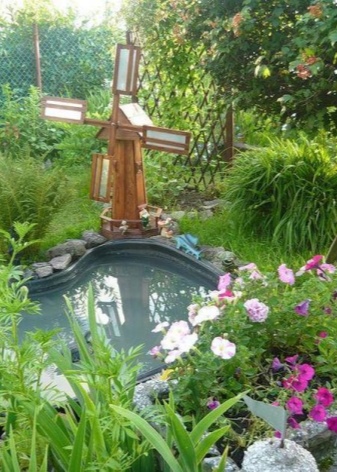
- A country-style mill is perfect for a site where there are already wooden buildings for various purposes. Wood, straw, plants, a mill, a pond look very cute.
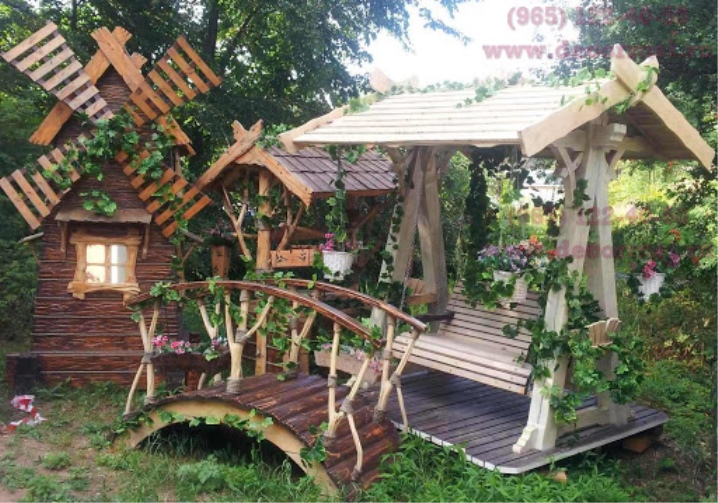
- The Russian-style windmill is like country music, only more clearly resembles a fairytale hut made of rough rounded bars. There can be a weather vane, and clay products as an addition, and a low wicker fence. And the best flower frame will be daisies.
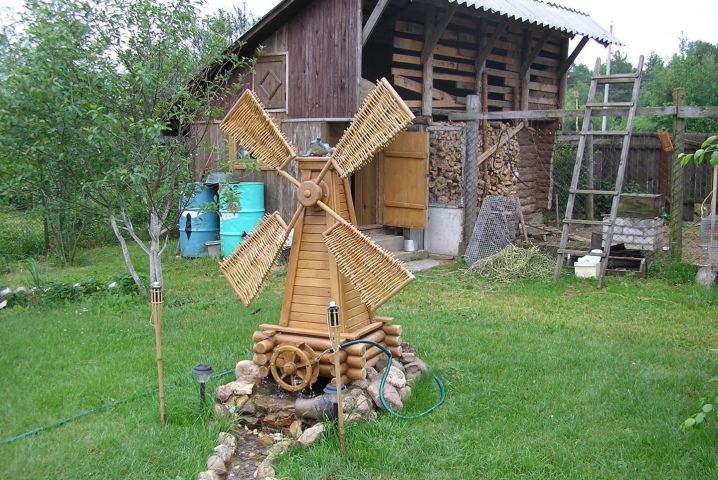
Finishing and decor
The best natural scenery for a mill is vegetation. Greenery and flowers most organically complete the composition with this structure. Based on what will be next to the mill, you need to choose its color. Paint, tint or varnish - everything should be consonant in this summer cottage composition.
Often the decoration next to the mill will be some kind of garden figure. For example, a cute stork that "walks" nearby, or funny frogs, if there is a pond next to a windmill. Sometimes it is a decorated wheel that plays the role of a flower bed or just lies for beauty and authenticity.
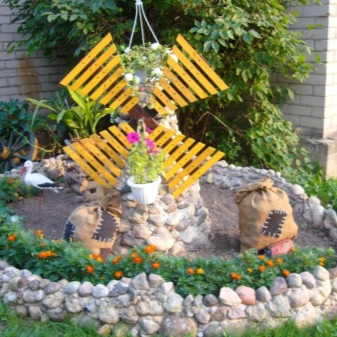
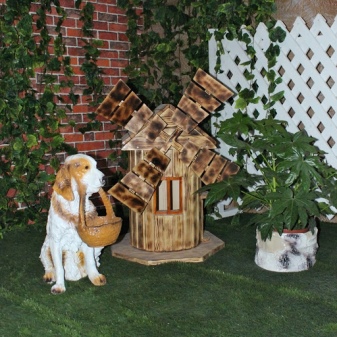
But the most interesting options can be found in the photo examples.
Examples of beautiful crafts
How a homemade windmill transforms landscape design can be seen in the examples below. Let's take a closer look at the composition with a mill in the garden.
- A very beautiful and by no means small mill is not lost against the backdrop of greenery, but only emphasizes the natural beauty. There are many decorative elements in the design, for clarity the author also used white - if there are other white elements on the site, this is a very convenient touch.
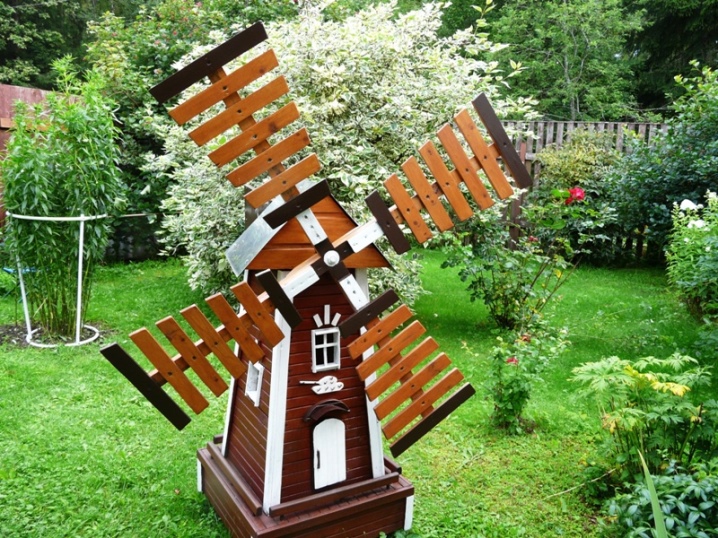
- This building is part of the overall wooden composition. The framing of the structure with stones is very interesting. Lanterns are also appropriate here, which certainly create a romantic atmosphere in the evenings.

- Not the biggest mill, surrounded by greenery. The door can be quite functional. It would be a good idea to hide gifts for grandchildren inside if the owners of the mill are grandparents.
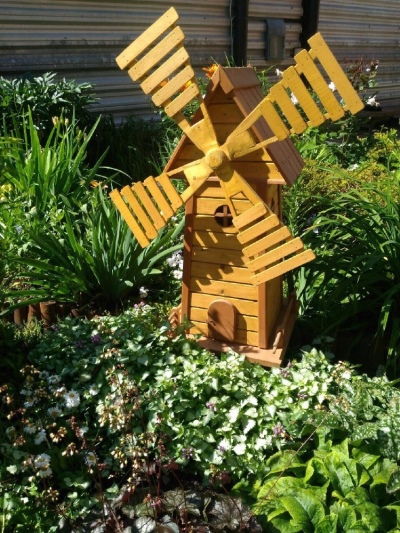
- A very beautiful structure, conveniently nestled along a charming garden path. Excellent finish, a lot of attention is paid to decorative details, good proportions.
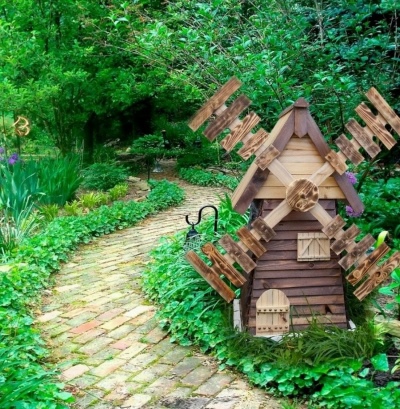
- "Slim" mill with a large windmill - a small hand-made article that will become a decoration of the summer cottage.
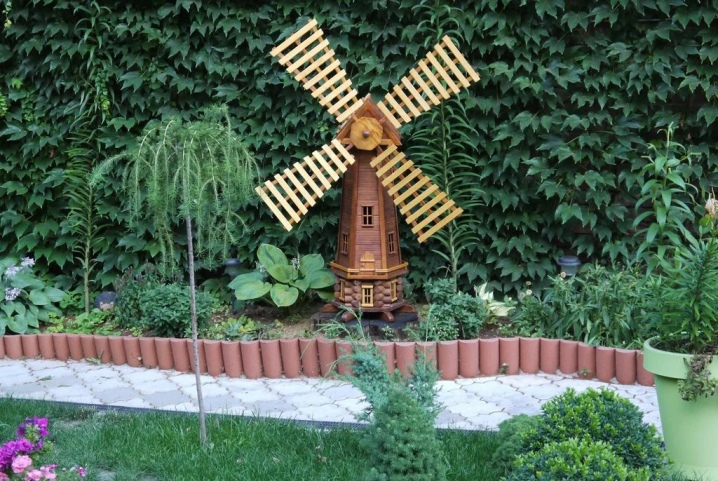
- If you are afraid to build something voluminous, you can start with such a modest, but cute structure.
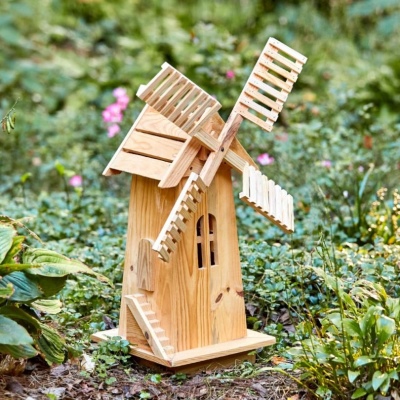
- An unusual shape of a mill - you can definitely come up with a useful function for it. Garden tools, for example, can be stored inside.
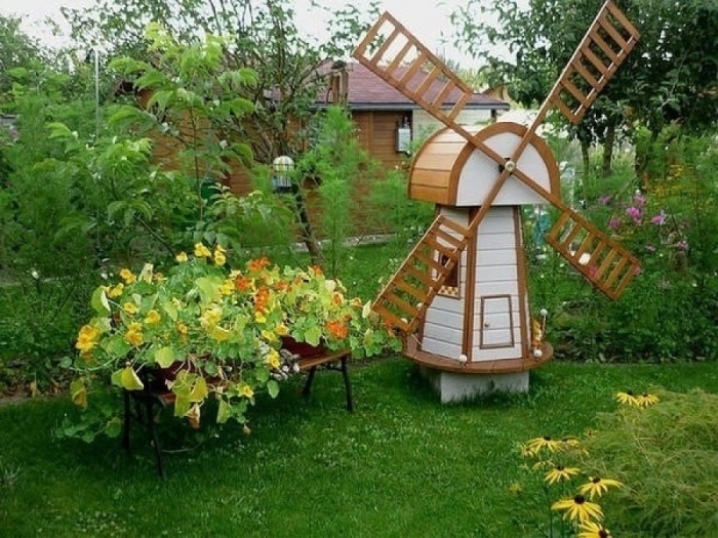
- A stone building can be cute and cozy too, but it takes a lot of work.
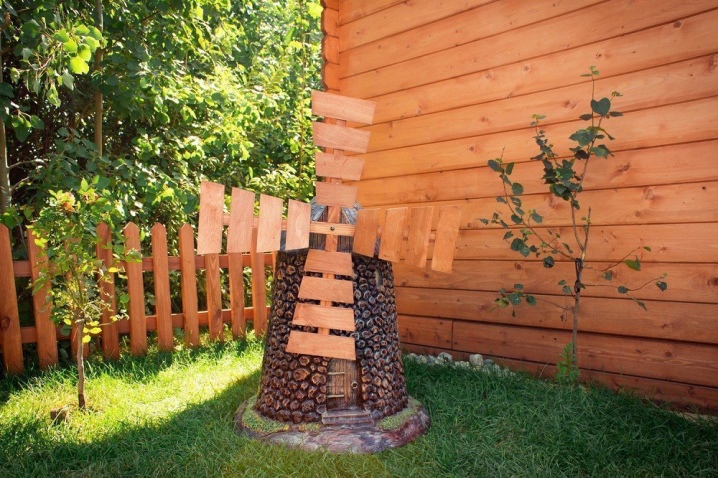
- Neighbors will be surprised if such a large-scale structure appears in the country. A small shed, only of a very unusual shape.

- A finished composition that creates a special, rustic atmosphere on the site.
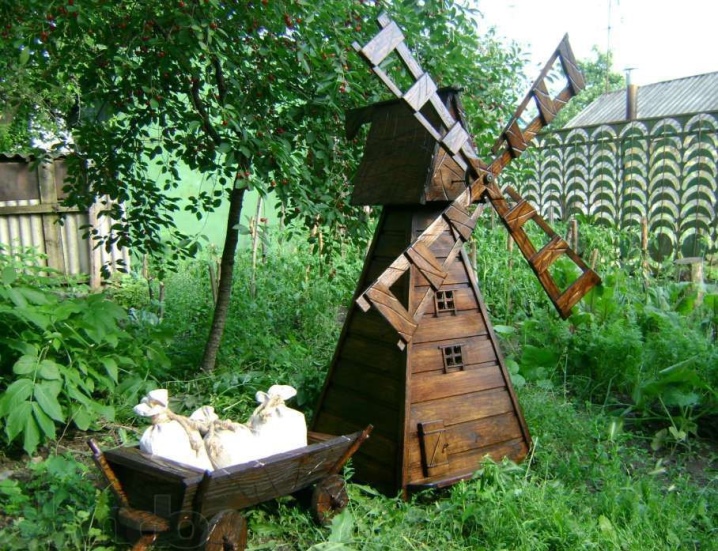
For information on how to make a decorative mill for a garden, see the video.



































































The comment was sent successfully.